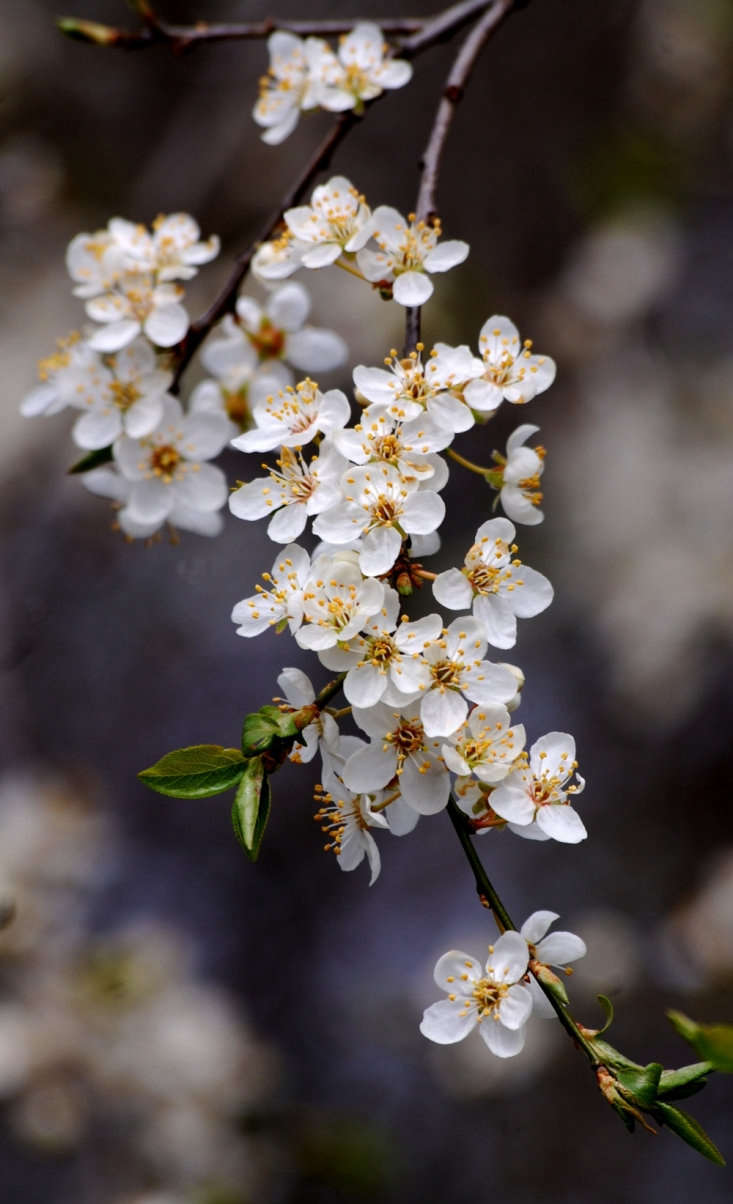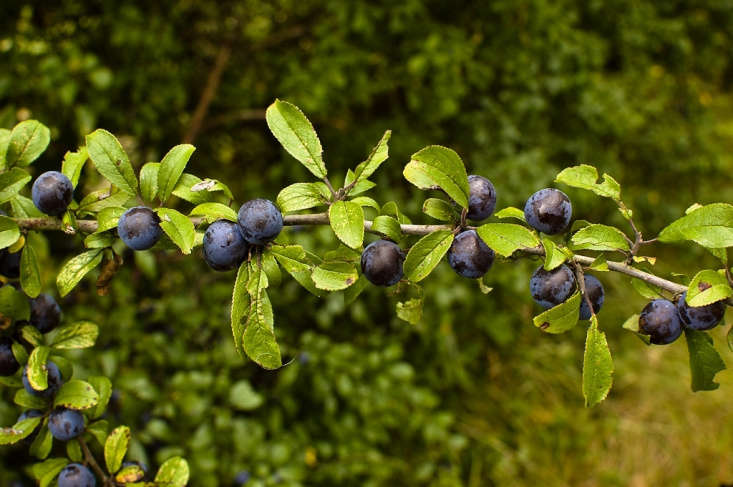Plum Tree, Prunus: “Early and Late”
Plum trees open and close the growing year. They are among the loveliest and earliest trees to blossom after winter, and their fruit is one of the last to ripen in late summer. In Japan plums are celebrated for their blossoms, with ume festivals preceding the more famous Hanami (cherry blossom festivals) by a couple of months.
Continue reading to learn more about which plums are which, and how to grow them.

Billowing with white blossoms, the common or European plum is Prunus domestica. The fruits of its numerous cultivars and subspecies are yellow- or green-fleshed. They are usually used commercially for drying or canning because they have a short season and do not travel well. Grown at home, though, common plums are a good choice because they only have to travel from the tree to your mouth; their flavor is highly valued. Common plums include the subgroup of famous gages (think greengage). As they are mostly self fertile, you only need one tree for fruit production. They are hardy from USDA zones 5 to 8.

Damsons (above) and mirabelles are closely related to P. domestica although there is disagreement about whether they are subspecies or different species altogether. Gorgeously dusky-fruited damsons are widely available, but mirabelles are the (online) subject of some confusion, in the US: Although a trade agreement with France prohibits the import of the fruit, it is entirely legal to grow and sell mirabelles within the US. These plums are hardy from USDA zones 5 to 7.
A mirabelle plum is $32.50 from Raintree Nursery. A blue damson tree (from seven to eight feet) is $109.95 from Willis Orchard.

The fruits usually found in supermarkets, month in, month out, are cultivars of Prunus salicina, or Japanese plums.

The blossoms of P. salicina vary widely in terms of color, and their fruiting season is longer.

Japanese plums are usually not self-fertile, so two or more trees are necessary for fruit-set. They are hardy from USDA zones 5 to 9.

Then there is Prunus spinosa, the celebrated sloe or blackthorn of English hedgerows. Knitting itself into thorny thickets (or living fences, depending on your point of view), the large shrub’s pure white blossoms open in succession across western and northern Europe to signal the end of winter.

Sloe bears the small, darkly intense fruit famous for infusing sloe gin. It is traditionally gathered after the first frost. The plants “sell like hotcakes,” say the purveyors at Forest Farm, Oregon. Get them while you can. Sloes are hardy from USDA zones 4 to 9.

North America has its own native plums, of course. Native to northeastern shorelines beach plum (Prunus maritima) shrubs burst into a froth of white bloom in early spring. The sprawling shrubs are very hardy and also more drought tolerant than most plum species. Their purple, cherry-size fruit ripens in early fall. Hardy from USDA zones 3 to 7.

Keep It Alive
- Plum flowers are susceptible to frost; it is important to position your new tree or trees in a spot sheltered from biting wind.
- Plums love plenty of moisture, but well-drained soil is essential.
- To improve drainage, add compost to the pot (and make sure it has drainage holes) or to the hole when planting your tree.
- Mulch newly planted trees in summer to prevent moisture loss (but do not mound the mulch against the trunk, or it will lead to rot).
- Indigenous plums will tolerate local conditions.
Cheat Sheet
- If you are not sure what is in bloom near you, look closely at the petals: Plums have rounded petals; cherry petals each have a tiny cleft at the tip (and peaches, blooming in between, have teardrop-shaped petals). Plum blossoms also grow tightly against the branches, while cherries have noticeable stems.
For more of our favorite flowering trees, see our curated design guide to Trees 101, including Apple Trees 101, Dogwood Trees 101, and Lemon Trees 101. For more inspiration, see:
- Cherry Blossoms: 6 Flowering Trees to Grow at Home
- 8 Cold-Climate Flowering Shrubs and Small Trees for Early Spring
- Flowering Magnolias: 7 Favorite Trees to Plant








Have a Question or Comment About This Post?
Join the conversation